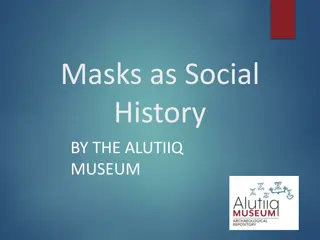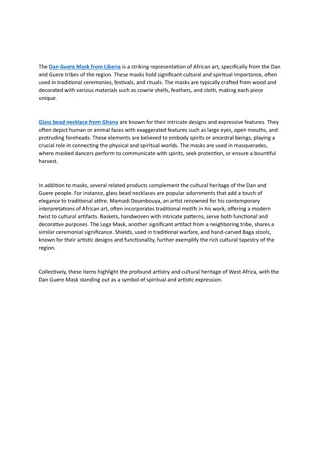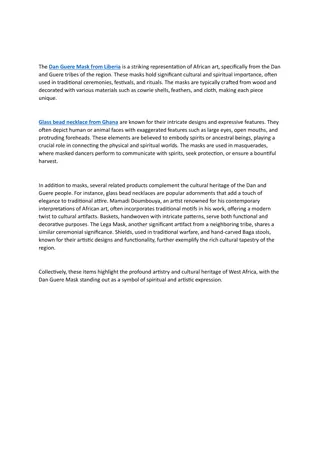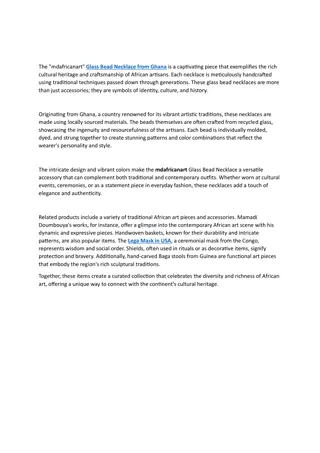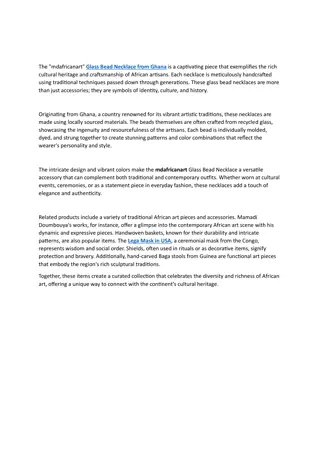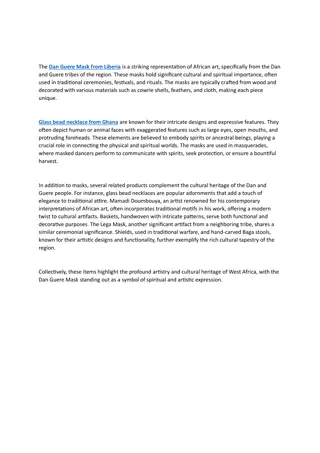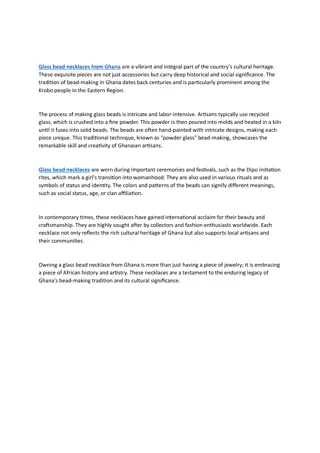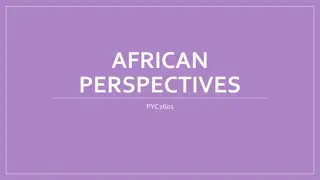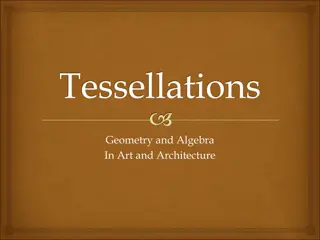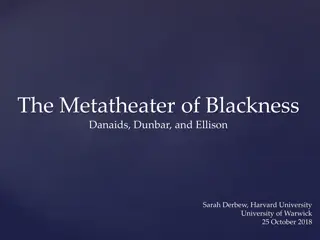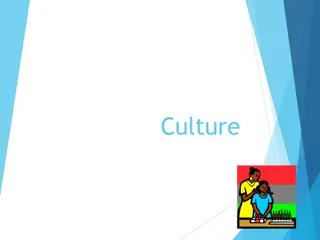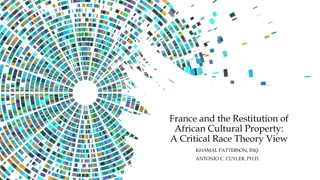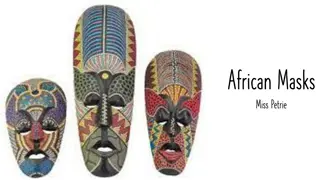African Masks: Cultural Significance and Artistry
African masks hold a deep cultural significance in various tribes across the continent. Crafted with skill and precision, these masks represent different aspects of life, from celebrations to mourning rituals. The mask makers, often revered in their communities, create intricate designs using materials like wood, bone, and metal. Each mask is meticulously made following strict rules, believed to imbue them with spiritual power. Used in ceremonies, storytelling, and dance, African masks serve as symbolic expressions of inner feelings and tribal history.
Download Presentation

Please find below an Image/Link to download the presentation.
The content on the website is provided AS IS for your information and personal use only. It may not be sold, licensed, or shared on other websites without obtaining consent from the author.If you encounter any issues during the download, it is possible that the publisher has removed the file from their server.
You are allowed to download the files provided on this website for personal or commercial use, subject to the condition that they are used lawfully. All files are the property of their respective owners.
The content on the website is provided AS IS for your information and personal use only. It may not be sold, licensed, or shared on other websites without obtaining consent from the author.
E N D
Presentation Transcript
The Mask Maker The continent of Africa has many cultures, but one element is common to them all MASKS
The Mask Maker The mask maker is a specially educated person who is respected and feared by his tribe for his understanding of the spirit world. Artists training can last for many years through either an apprentice/mentor relationship or by skills that are passed down from father to son.
Every mask is made according to strict rules. They believe that the materials that they work with and every color and shape has power. This power directs the artists work. Masks are made of bone, ivory, metal, fiber, and most often wood. They may look natural or abstract using bold, geometric shapes. They can represent qualities such as nobility, beauty, courage, humor, etc.
African masks are used as ceremonial costumes. They are very symbolic (celebration, war, death) and of inner feelings. Masks are used to help tell a story about the tribe s history. They come to life through music and dance. One thing that is common to all masks: They are expressions of inner feeling and not copies of nature. Not all masks are intended to be worn in public.
African Masks - Yohure The Yohure are noted for their beautifully crafted masks that combine human and animal features. They have elaborate hairstyles which often include horns, elongated faces with a high forehead, arched eyebrows and a low protruding mouth. The face of a Yohure mask is outlined with triangular zigzag designs. Yohure masks are used in dance rituals to help villagers come to terms with the death of one of their people. The masks represent the Yu spirits who restore the social balance after a bereavement. These masks are considered very powerful and dangerous objects. They must be kept out of sight of women for fear of the effects that the supernatural powers of the Yu spirits may have on them.
African Masks - Biombo Biombo masks are usually carved from wood and colored with red "tukula" powder, a dye made from the camwood tree. The eyes are a typical coffee bean shape. A triangular checkerboard design is used to decorate the eyebrows and the planes of the face. The three forms at the back of the head represent the Biombo hairstyle. Feathers are often attached to the top of Biombo masks. Biombo masks are usually worn during tribal rituals and ceremonies.
African Masks - Lwalwa The Lwalwa mask above is an mvondo mask which is worn by men. Lwalwa masks are stylized using simple geometric forms to represent the features of the face. The eyes of the mask are rectangular holes and the nose is a long flat triangle that often stretches to the top of the head. The ears are reduced to small bumps and a stylized mouth projects from above a pointed chin. Lwalwa masks are carved from a wood called mulela and colored with a dye from the fruit of the mukula tree, also called the bloodwood or sealing wax tree. The Lwalwa are famous for their dancing and masks play an important part in their celebrations, particularly the secret rituals of the bangongo society who are responsible for the initiation of young men into adulthood.


![❤Book⚡[PDF]✔ Star Maps: History, Artistry, and Cartography (Springer Praxis Book](/thumb/21625/book-pdf-star-maps-history-artistry-and-cartography-springer-praxis-book.jpg)

